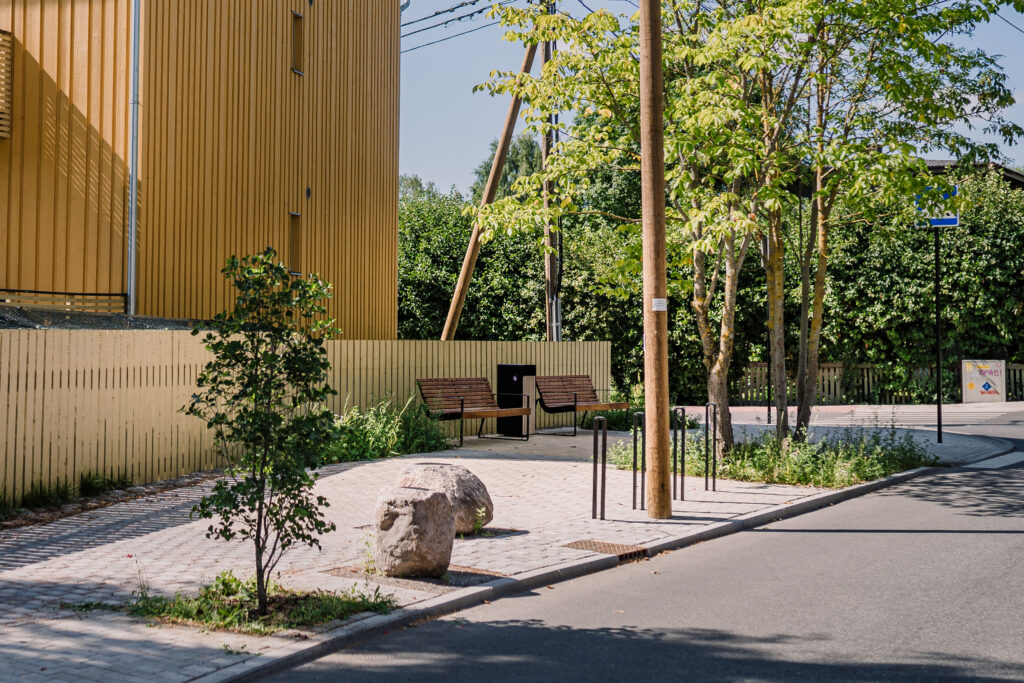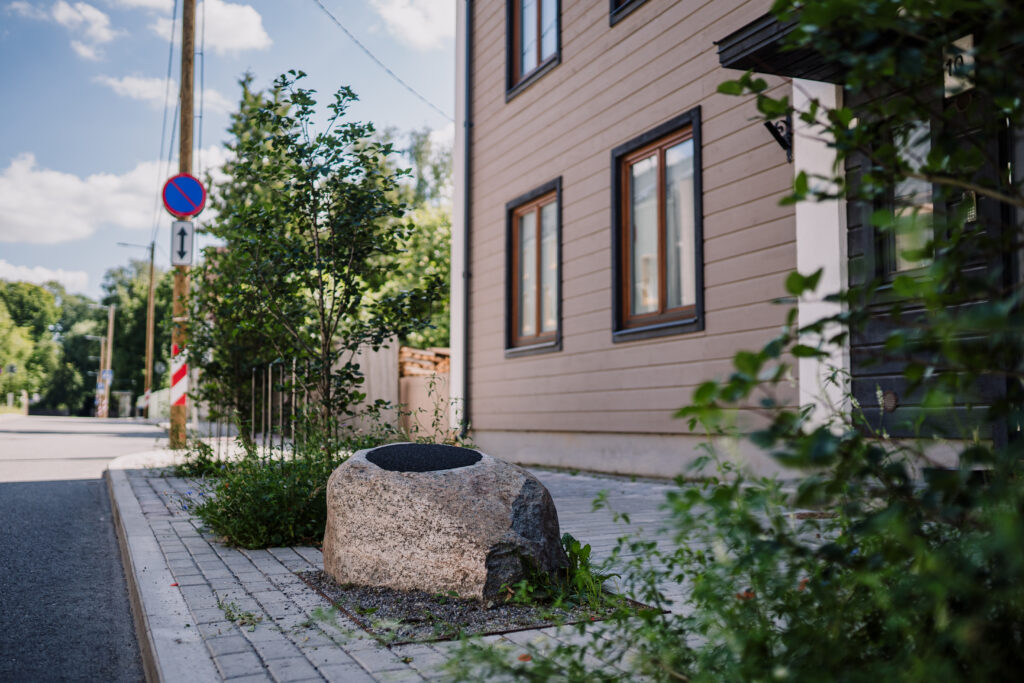I have lived in Oa Street for more than seven years and as some of the time we have been taking our kids to the nursery in the centre, I remember the time before renovations very well. Although it would have been more interesting to take the shortcut through the botanical garden, we mostly preferred Herne or Emajõe Streets due to safety and ease. It wasn’t too pleasant to go on foot, by bike or pushbike along the muddy pavements and stay alert for any cars approaching yet another puddle. In drier periods, the mud was replaced by dust, and the temporary pavement built before the reconstruction was a joke. Now we have noticed that we often choose to take Oa Street for our walks as it is spacious, safe and the environment is pleasing to the eye. It’s also nice that it is not just a uniform strip of asphalt but there will be further improvements offered by the diverse landscaping and plants changing over time.
Hanna Maran, photographer and local resident
The city district Supilinn is primarily a set of residential streets that must be first adjusted to local needs and only then to those of people driving through and visiting local businesses. The streets are essentially quiet and peaceful, full of locals. Drivers here consider all road users and treat them with equal respect – children, cats, cyclists, rollators. Such mutual understanding can only happen in a street space where non-motorised road users are given priority and where it is nice to spend time for longer and this way generate social control. The cars only get the minimum width from the road with all junctions signalling the presence and priority of non-motorised road users.
Various materials, pavement patterns and colours seem to form a patchwork as colourful as the district itself, thus reflecting its outward irregularity that is actually orderliness. The order on the sidewalk is maintained by the paths made of uniform standard concrete slabs connecting the small squares of various size and nature. There is order also near garden gates with red pavement slabs to increase people’s attentiveness.
Similar diversity is also reflected in street furniture such as bike racks, benches and rocks that, on the one hand, let you sit up straight while also allowing you to climb on the oversized cobblestones with “seat heating”.
As Supilinn is located in a fringe area forming a transition from the urban to the more natural, it is essentially a mixture of the two worlds, featuring urban civility alongside wildish proliferation. The planting in the street consists of a set of stepping stones, that is, small green areas with natural species all together forming a functioning system. In narrower sections with no space for larger green areas, it is important to maintain coherence between the small green patches, for instance, garden edges or tufts of grass between single rocks. Despite some fragmentation, the general impression of the street remains green, with the large rocks between the plants generating excitement for people and micro-habitats for other species (insects, lichen).
















































































































































































































